Design Thinking vs. UCD
Often as UX designers, we use jargons like User Centric, Designer Mindset, User personas, User scenarios and talk about keeping users needs at the center while designing. But often we forget to keep user needs at the center, get biased or driven by our own needs or what stakeholders want and end up working on what we have been told to make some interfaces.
This article is aimed towards reinforcing your mindfulness about the design thinking approach to problem-solving and motivate UX designers out there to follow the User-Centered Design Framework while designing.
Set of Mindsets, Process, Methods

Design Thinking is a set of mindsets for problem-solving in general. It is an approach to problem-solving, which is very different from a conventional
approach to problem-solving which has always been tech or business driven where the focus is on business needs and technology-driven innovation. Design Thinking is inspired by mindset, processes, and methods followed by various great designers and innovators in the past.
With technology become easily accessible, user experience is becoming the differentiator in products and services. Design Thinking is the creative problem-solving process which a designer follows in the mind as well as in action in different phases to come up with a usable, elegant solution that really solves the problem.
It can be applied to solving real-world wicked issues like huge lines in front of ATM, Climate Control, etc or even as an approach to come with a digital product for a startup or in a corporate environment.
Design Thinking Process might seem a linear process with an end but it’s not a linear process, it is an iterative process.
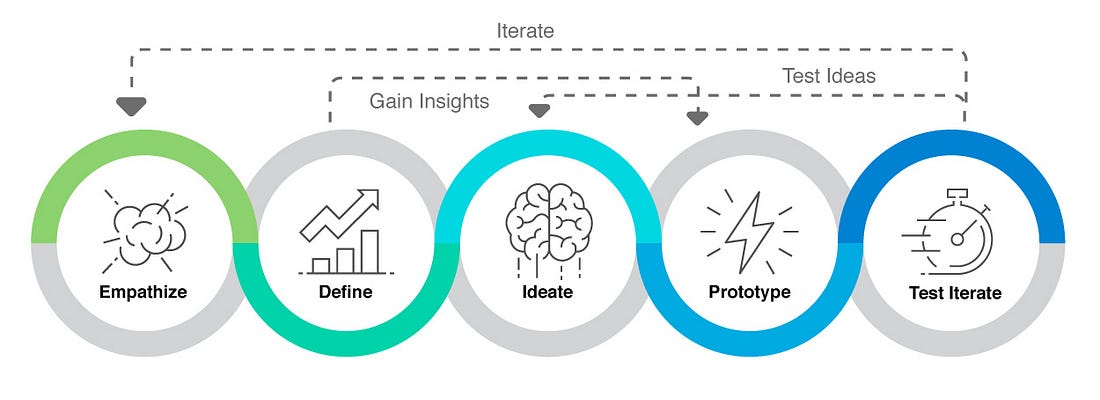

This image puts it more in the context of an iterative and cyclic process. This image lists out the high-level phases Understand, Explore, Materialize and granular steps being:
Empathize
Define
Ideate
Prototype
Test
Implement.
This is the double diamond depiction of the design thinking process which focuses on the divergent and convergent mindset followed during different steps of the process.

What is User-Centered Design Process?

The term User-centered design is a common process used generally in the context of a software development lifecycle in a company where typical human-centered design thinking activities and methods are broken down into four phases in the development lifecycle.
Design is not just a step in a project. The role of a designer keeps on changing as per the phase of the project starting from conducting user research in the Discovery phase to Designing the information architecture, interaction design, visual design in the design phase, UX/UI consultation in the Development phase to conducting Usability Testing in Testing phase.
“The aim here is also to make something useful and usable for the user and to make sure that all the design decisions are taken keeping in mind the end user, be it choosing which features would go in the application to which color will be used as a primary color in the mobile application.”
Since there is always a time and resource constraints for companies building a product that will do good business and will be usable for users as well, the UCD process and methods in each phase of it ensures that design thinking is not lost at any stages of the product development lifecycle.
UCD ensure the product should be desirable for the user (design team does this), viable for the business (business team takes care of this) as well technically feasible (Dev. team’ job) as per given time and resource constraints. Also, it helps in defining certain common artifacts which can be used in discussions throughout the project so that all teams have a common understanding about what they are trying to do at each stage of the process.
Let us now understand how the core design thinking Mindsets are connected and baked into a user-centered design processwhich includes design Methods/ Activitieswhich help us create innovative, usable and delightful products and services.
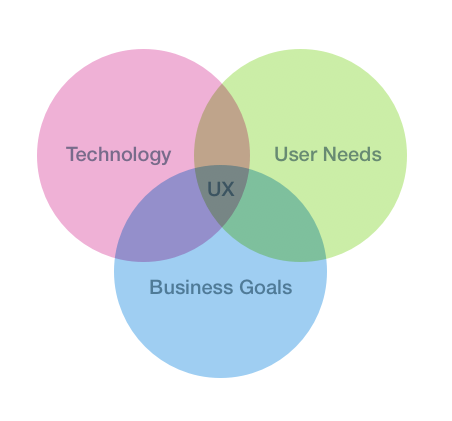
Empathize or Discover | Focus on Human Values
Mindset
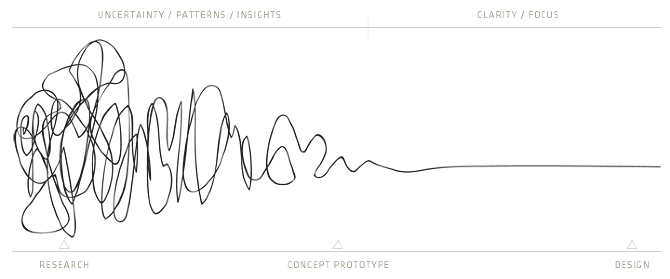
Design Thinking approach says that to innovate (to solve problems in a creative way), one needs to really start by understanding who their users really are, or as they say “to be in someone else’s shoes and see things from their perspective” and understand what is really the problem.
Until we have a good understanding of who are users really are, not just in terms of demographics, but their pain points, behaviors, and motivations, we will not be able to come up with a solution which really solves the core problem. Here the designer is focused to clear out their biases/ assumptions about the problem so that they don’t end up designing for themselves and follows a diverging approach.
Aspiring designers often find this phase new, messy and abstract as they are not used to this problem-solving approach of developing Empathy first. At this moment trust the design process that it will help you end somewhere good.
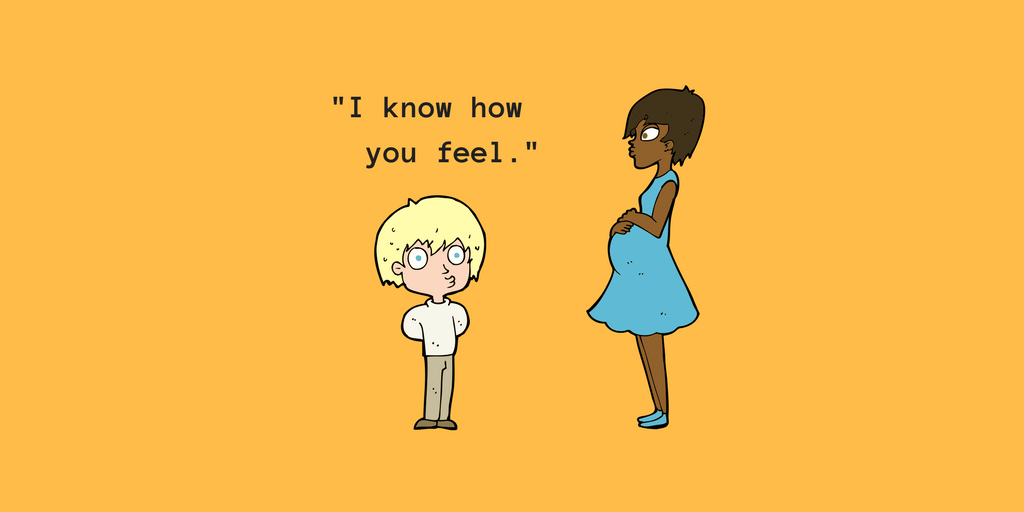
Methods/ Activities
Secondary Research (Articles, Trends, Statistics, App Reviews)
Understanding user needs and psychology through User Research (User Interviews, Surveys, Observational Studies)
Understand Business Goals of Stakeholders
Define or Synthesize | Defining the right problems
Mindset
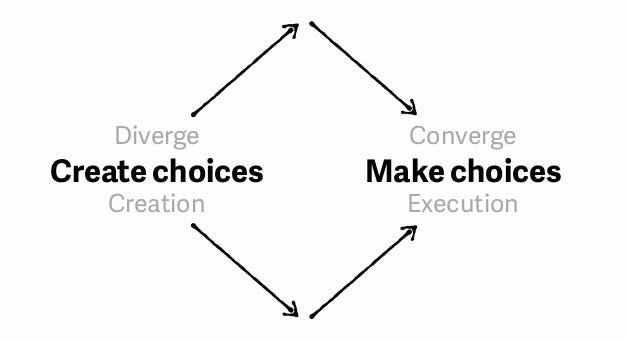
Now when the designer has empathized with the users and collected all the data, its time now to analyze the research and converge to insights which will help generate ideas that solve the pain points identified. Why we are analyzing is because what users say and what they do are different, so we cannot just take granted what users say, but we need to go deeper and analyze, synthesize and identify our core users, their needs, motivations and
frustrations. The divergent and convergent way of thinking is simply the mindset the designer needs to be mindful about while executing the design process. Divergence is about exploring and learning from choices like while conducting user interviews, we go wide and talk to as many potential users as we can and understand users from every perspective. Then to make a concrete understanding of our users from the data collected we converge and conduct methods such as Affinity Analysis to generate User Personas and User Scenarios.
Methods/ Activities
Conducting Affinity Analysis, Empathy Mapping, User Journey Mapping
Creating User Personas, User Scenarios
Design or Ideate | Craft Clarity
Mindset
Now, when the designer has a clear understanding of who their users really are what are their needs and pain points, we can start thinking of ideas considering no technical feasibility but really focusing at solving the problem in a way which gives a good UX to the user.
“The best way to ideate is to use technology to create magic”
One should diverge while brainstorming about ideas, but since we need to go ahead in the process, we need to converge by prioritizing ideas keeping business needs, user needs and technical feasibilities. Design is not a single person’s job, it should always happen in a multidisciplinary team of individuals. Radical Collaboration amongst team should be encouraged.
“Designers working in psylos often get attacked by their intuition and start designing for themselves”
This is also the phase where Bias towards Action is necessary. This is a phase where all our thinking starts translating into some structure which further gets a skeleton in the form of wireframes and visual design.
Usability is a science which talks about how things work and cognition, Feel is related to the understanding of user psychology and emotions. The Look aspect is the art of creating aesthetically pleasing color harmonious designs.
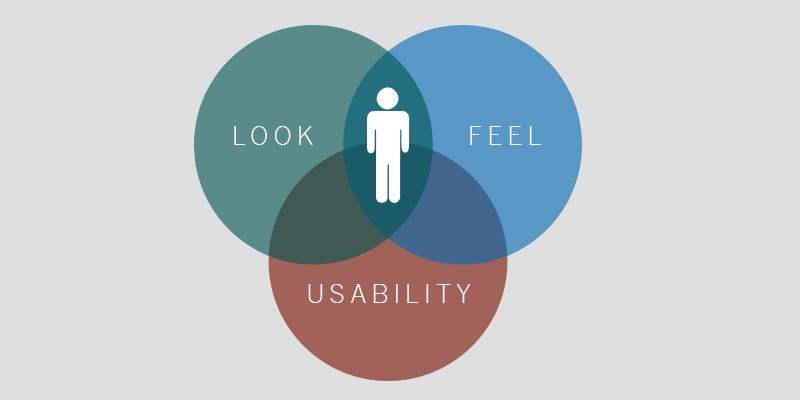
Methods/ Activities
Creating Task Flows and Information Architecture
Interaction Design and Usability Design
Visual Design and Emotional Design
Prototyping and Development | Embrace Experimentation
Mindset
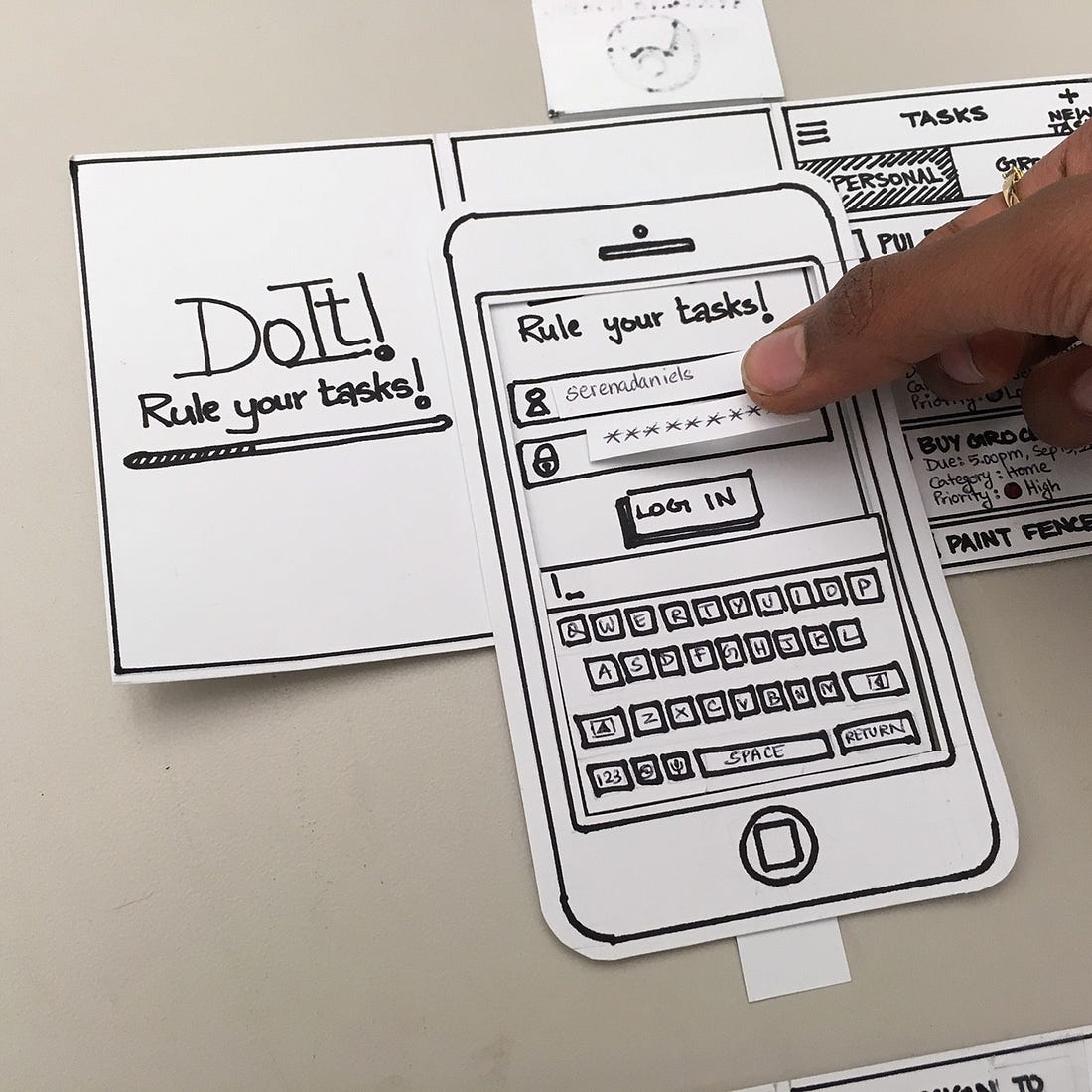
Prototyping helps you learn and think. It’s not always just about validating an idea or gaining evidence of the right solution. It can also simply help to take action on an idea to understand it better.
Before actually giving the final design assets to developers, its always good to create an interactive prototype and provide and show it to developers and check the feasibility issues and also gather some quick user feedback.
Making a prototype before final development can also bring the stakeholders on the same page before releasing the final design and helps avoid conflicts later and identify major usability issues.
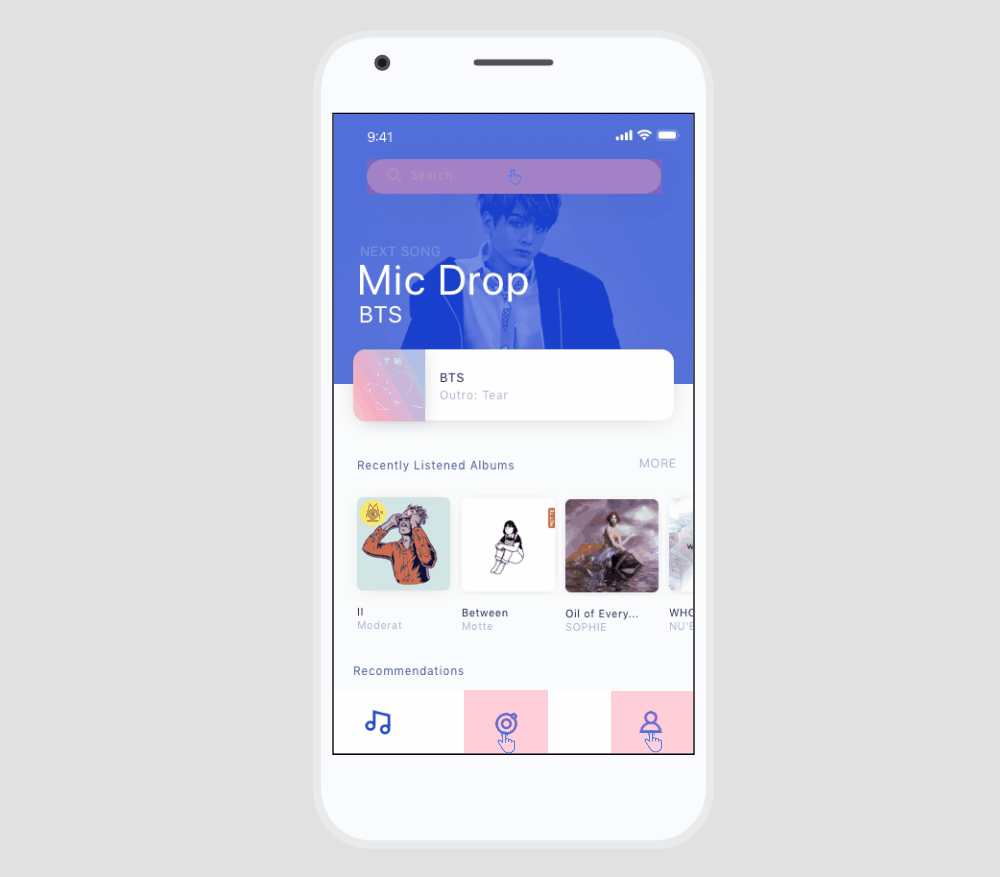
Methods/ Activities
Paper Prototyping
Interactive Prototyping using AdobeXd/ Sketch
Test | Gather User Feedback and Re-Iterate
Mindset
Making the design decisions based on user research and personas increases the probability that the product will solve real problems in users life and will be usable as well. But to actually see if the product/ service is really needed and works it needs to be tested with real users.
While testing, the designer should focus on identifying and defining key metrics which can be measured to prove to ROI of UX to stakeholders. This is needed in most organizations today as the majority of companies are still realizing the value of UX for their businesses.
Methods/ Activities
Usability Testing
A/B Testing
To know and learn more about Design Thinking, UCD Process Methods/ Activities in detail, check out the curated UX Glossary and UX Resourcesprovided by Designerrs Lab.
Written by Designerrs Team with love 🙂
Design Thinking vs. UCD was originally published in DSchool on Medium, where people are continuing the conversation by highlighting and responding to this story.
